Intro
Discover Toradol Injection side effects, including pain relief risks, NSAID complications, and ketorolac warnings, to ensure safe medication management and minimize adverse reactions.
The Toradol injection, also known as ketorolac, is a nonsteroidal anti-inflammatory drug (NSAID) used to treat moderate to severe pain. It is often administered via injection to quickly alleviate pain and inflammation. However, like any medication, the Toradol injection can cause side effects, some of which can be severe. Understanding the potential side effects of the Toradol injection is essential for patients to make informed decisions about their treatment.
The Toradol injection is commonly used in emergency rooms, hospitals, and clinics to treat a variety of conditions, including pain caused by surgery, injury, or illness. It works by blocking the production of prostaglandins, which are chemicals in the body that cause pain and inflammation. While the Toradol injection can be effective in managing pain, it can also cause a range of side effects, from mild to severe. Patients should be aware of these potential side effects and discuss any concerns with their healthcare provider.
The importance of understanding the side effects of the Toradol injection cannot be overstated. Patients who are aware of the potential risks and benefits of the medication can make informed decisions about their treatment and take steps to minimize the risk of side effects. Additionally, healthcare providers can use this information to monitor patients more effectively and adjust treatment plans as needed. By understanding the side effects of the Toradol injection, patients and healthcare providers can work together to ensure safe and effective pain management.
Toradol Injection Side Effects Overview

The Toradol injection can cause a range of side effects, including gastrointestinal problems, allergic reactions, and increased risk of bleeding. Some of the most common side effects of the Toradol injection include nausea, vomiting, diarrhea, and stomach pain. These side effects are usually mild and temporary, but they can be severe in some cases. Patients who experience severe gastrointestinal symptoms should seek medical attention immediately.
Common Side Effects of Toradol Injection
Some of the most common side effects of the Toradol injection include: * Nausea and vomiting * Diarrhea * Stomach pain * Headache * Dizziness * Drowsiness * Increased risk of bleedingSevere Side Effects of Toradol Injection
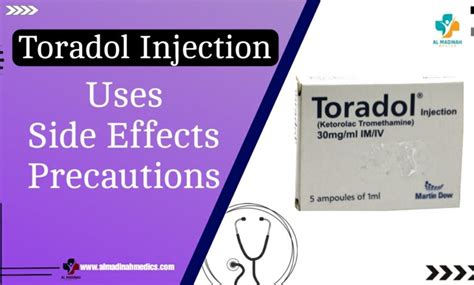
In addition to common side effects, the Toradol injection can also cause severe side effects, including gastrointestinal perforation, kidney damage, and increased risk of heart attack and stroke. These side effects are rare but can be life-threatening. Patients who experience severe side effects should seek medical attention immediately.
Rare but Serious Side Effects of Toradol Injection
Some of the rare but serious side effects of the Toradol injection include: * Gastrointestinal perforation * Kidney damage * Increased risk of heart attack and stroke * Severe allergic reactions * Stevens-Johnson syndrome * Toxic epidermal necrolysisToradol Injection Interactions
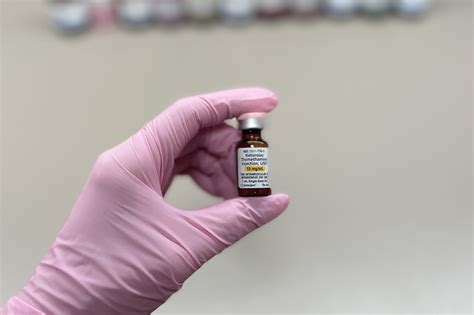
The Toradol injection can interact with other medications, including blood thinners, aspirin, and other NSAIDs. These interactions can increase the risk of side effects, including bleeding and stomach ulcers. Patients should inform their healthcare provider about all medications they are taking before receiving the Toradol injection.
Medications that Interact with Toradol Injection
Some of the medications that interact with the Toradol injection include: * Blood thinners * Aspirin * Other NSAIDs * Corticosteroids * Selective serotonin reuptake inhibitors (SSRIs)Toradol Injection Warnings and Precautions
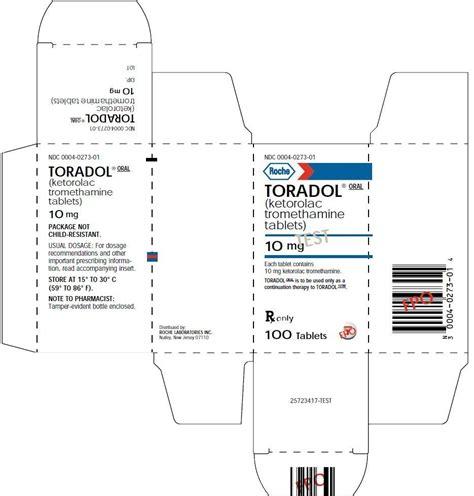
The Toradol injection is not suitable for everyone, particularly those with certain medical conditions or taking certain medications. Patients with a history of gastrointestinal problems, kidney disease, or heart disease should use the Toradol injection with caution. Additionally, patients who are pregnant or breastfeeding should consult their healthcare provider before receiving the Toradol injection.
Conditions that Require Caution with Toradol Injection
Some of the conditions that require caution with the Toradol injection include: * Gastrointestinal problems * Kidney disease * Heart disease * High blood pressure * Asthma * Bleeding disordersToradol Injection Dosage and Administration
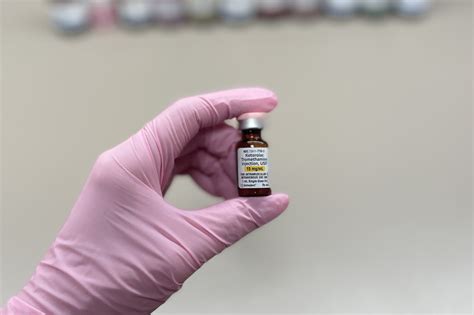
The dosage and administration of the Toradol injection vary depending on the patient's condition and response to treatment. The recommended dose is usually 15-30 mg, administered intramuscularly or intravenously. Patients should follow their healthcare provider's instructions carefully and report any side effects or concerns.
Instructions for Administering Toradol Injection
Some of the instructions for administering the Toradol injection include: * Follow the recommended dose and administration route * Monitor patients for side effects and adjust treatment as needed * Use the Toradol injection for the shortest duration necessary * Avoid administering the Toradol injection to patients with certain medical conditions or taking certain medicationsToradol Injection Overdose
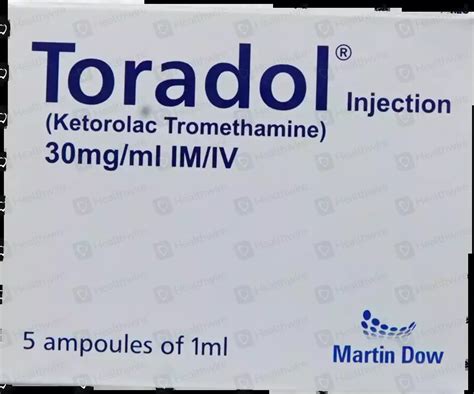
Overdose of the Toradol injection can occur if the patient receives too much of the medication. Symptoms of overdose include nausea, vomiting, stomach pain, and drowsiness. In severe cases, overdose can lead to respiratory depression, coma, and even death. Patients who suspect an overdose should seek medical attention immediately.
Symptoms of Toradol Injection Overdose
Some of the symptoms of the Toradol injection overdose include: * Nausea and vomiting * Stomach pain * Drowsiness * Respiratory depression * Coma * DeathToradol Injection Alternatives

For patients who cannot tolerate the Toradol injection or experience severe side effects, alternative pain management options are available. These alternatives include other NSAIDs, opioids, and non-pharmacological interventions such as physical therapy and acupuncture. Patients should discuss their options with their healthcare provider to determine the best course of treatment.
Alternative Pain Management Options
Some of the alternative pain management options include: * Other NSAIDs * Opioids * Physical therapy * Acupuncture * Cognitive-behavioral therapyWhat are the most common side effects of the Toradol injection?
+The most common side effects of the Toradol injection include nausea, vomiting, diarrhea, and stomach pain.
Can the Toradol injection cause severe side effects?
+Yes, the Toradol injection can cause severe side effects, including gastrointestinal perforation, kidney damage, and increased risk of heart attack and stroke.
How can patients minimize the risk of side effects with the Toradol injection?
+Patients can minimize the risk of side effects by following their healthcare provider's instructions carefully, reporting any side effects or concerns, and using the Toradol injection for the shortest duration necessary.
In conclusion, the Toradol injection is a powerful pain management medication that can cause a range of side effects, from mild to severe. Patients who are aware of the potential risks and benefits of the medication can make informed decisions about their treatment and take steps to minimize the risk of side effects. By understanding the side effects of the Toradol injection, patients and healthcare providers can work together to ensure safe and effective pain management. We encourage readers to share their experiences with the Toradol injection and ask questions in the comments section below. Additionally, readers can share this article with others who may be interested in learning more about the Toradol injection and its potential side effects.
